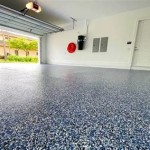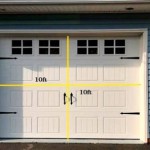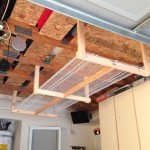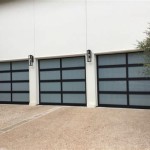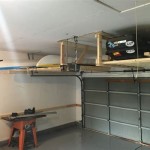How To Build Garage Storage Shelves
Garage storage shelves maximize vertical space, providing a practical solution for organizing tools, equipment, and seasonal items. Building custom shelves allows for tailoring dimensions and weight capacity to specific needs and the available garage space. This guide provides a step-by-step approach to constructing robust and efficient garage storage shelves.
Planning and Preparation
Careful planning is essential for a successful shelving project. This initial stage encompasses several key steps:
- Assess Available Space: Measure the designated area's width, depth, and height to determine the shelf unit's maximum dimensions.
- Determine Storage Needs: Consider the items to be stored, their size, and weight, to guide shelf dimensions and load-bearing capacity.
- Create a Design: Sketch the shelf unit, including the number of shelves, their spacing, and overall dimensions. Online design tools can be helpful.
- Material Selection: Choose durable materials appropriate for the intended load. Common options include plywood, solid wood, and metal shelving components.
- Gather Tools and Materials: Compile a comprehensive list of necessary tools and materials based on the chosen design and materials. This may include a saw, drill, screws, measuring tape, level, safety glasses, and the selected shelving materials.
Building the Frame
The frame provides the structural support for the shelves. Accuracy in this stage is critical for stability.
- Cut the Vertical Supports: Cut the vertical supports (studs or posts) to the desired height, ensuring they are identical in length.
- Cut the Horizontal Supports: Cut the horizontal supports to the shelf's desired width. These pieces connect the vertical supports and form the shelf's frame.
- Assemble the Frame: Attach the horizontal supports to the vertical supports using screws or appropriate fasteners. Ensure the frame is square and level during assembly.
- Add Support Braces (Optional): For added stability, especially with heavier loads, install diagonal braces at the back or sides of the frame.
Installing the Shelves
With the frame completed, the next step is to install the shelves themselves. This involves:
- Cut the Shelf Material: Cut the shelf material (plywood, solid wood, etc.) to the desired dimensions, ensuring accurate measurements for a snug fit within the frame.
- Attach the Shelves: Secure the shelves to the horizontal supports using screws, ensuring they are evenly spaced and level.
- Reinforce Shelf Supports (Optional): For heavier loads, consider adding additional support underneath the shelves, such as cleats or metal bracing.
Finishing and Securing
The finishing stages enhance the shelves' durability and safety.
- Sanding and Painting/Staining (Optional): Sand any rough edges and apply paint or stain for a finished look and added protection against moisture.
- Securing the Unit to the Wall (Recommended): Anchor the shelving unit to the wall studs for enhanced stability and safety, particularly in earthquake-prone areas.
Material Considerations
Choosing the correct materials impacts the shelves' strength and longevity.
- Plywood: A cost-effective and versatile option for shelving. Choose a thicker plywood for heavier loads.
- Solid Wood: Offers a more aesthetically pleasing finish but can be more expensive. Select a durable wood species like pine or cedar.
- Metal Shelving Components: Pre-fabricated metal components offer quick and easy assembly but may have lower weight capacity than custom-built wood shelves.
Safety Precautions
Prioritizing safety during the construction process is paramount.
- Eye Protection: Always wear safety glasses to protect eyes from dust and debris.
- Proper Ventilation: Ensure adequate ventilation when working with paints, stains, or sealants.
- Safe Tool Handling: Follow manufacturer's instructions for all power tools and use appropriate safety precautions.
- Work Gloves: Wear work gloves to protect hands from splinters and sharp edges.
Load Capacity Considerations
Understanding load capacity ensures the shelves' safe and effective use.
- Shelf Material Thickness: Thicker shelf material increases load capacity.
- Support Spacing: Closer spacing between supports increases load capacity.
- Shelf Depth: Shallower shelves generally have a higher load capacity than deeper shelves.
- Material Type: Different materials have different inherent strength properties, impacting load capacity.

How To Build Shelving In A Garage Three Ways Ana White

How To Build Diy Garage Storage Shelves Crafted Work

Easy Diy Garage Shelves With Free Plans Fixthisbuildthat

The Best Garage Shelving Easy One Person Project Anawhite

Diy Corner Shelves For Garage Or Pole Barn Storage

Diy How To Build Suspended Garage Shelves Building Strong

Diy Garage Shelves 5 Ways To Build Yours Bob Vila

Portable Garage Storage Shelves Rogue Engineer

Super Easy Diy Garage Shelves Shanty 2 Chic

How To Build Garage Storage Shelves By Yourself Diy Cabinets
Related Posts

